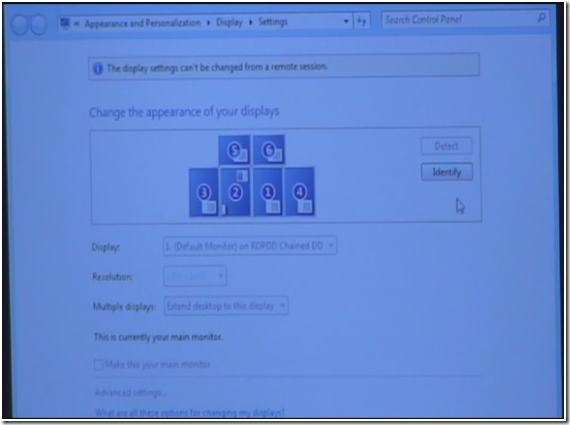The RX300, built on the latest Raspberry Pi 3 platform, is a simple-to-deploy, centrally managed, high-performing thin client. L-series The L-series, powered by our Numo System on Chip (SOC), are small, low-power devices for use with vSpace. Chrome Remote Desktop The easy way to remotely connect with your home or work computer, or share your screen with others. Securely access your computer whenever you're away, using your phone. I have a Chromebook VPN user who has been successfully connecting to her remote workstation daily for a few months now, using the Microsoft Remote Desktop Client (for Chromebook), which is found in the Google Play repository. Very recently, her Window 10 (1809) workstation completed some minor updates.
Are Chromebooks and Windows finally playing nice together? Can end users celebrate a renaissance of compatibility and the freedom to deploy the laptop of their choosing? Well, maybe. If you do it right with the IT.
It feels just like the early ‘90s when Apple and Windows PCs worked side by side in the enterprise for the first time. “When it comes to supporting enterprise networks, heterogeneity has become a fact of life,” David Strom wrote in a 1993 edition of Computerworld. “The days of a single operating system per corporation are firmly in the past.”
Intrigued, I called Strom for his take on Chrome OS in the workplace today. “The names have changed but the problem is the same,” he tells me, a little astonished that I unearthed his 25-year old article. “The PC is personal, even if the company paid for it,” Strom says, a truth learned from 30+ years around corporate IT.
As he penned in 1993, companies have “politics and religious zealots” for certain OS or hardware brands; various departments deploy different technology while “administrators are left trying to stitch things together,” which sounds about right in the modern age of BYOD.
It was even trickier in the ‘90s before TCP/IP standardized the way computers talk over a network. Strom remembers those bad old days: “Connectivity is resolved, thankfully, but there are more form factors and device complexity today; something as simple as copy-pasting from one device to another is a four or five step process.”
At least there are no Token Ring LAN keys to deal with any more.
The PC is personal, so IT has to deal with Chromebooks
The fact of the matter is that Chromebooks are hot right now and IT has to deal with it. They’re outselling Apple in a way that Hyundai outsells BMW. Gartner says Chromebook shipments will grow 18% this year, and set to post double digit growth until 2019.
Chromebooks are not being used as Windows PC replacements, as noted a recent PCWorld article, but the writer mistakes that this was Google’s objective for the device. “We knew we didn’t have leadership in the laptop market,” says Alex Kattar, a former Chrome OS corporate trainer. “That’s not what the Chromebook was designed to do.”
Chromebooks were originally imagined for business travelers
Kattar explains the Chromebook concept came about as a lightweight laptop for business travel. It is capable enough for cloud-based productivity apps, but if lost or stolen, did not cost a lot of money to replace. Moreover, the lack of a hard drive meant you did not lose a bunch of sensitive data with the laptop.
A business traveler would leave a more powerful Windows PC or MacBook at the office and use a Chromebook to access their data—by cloud or remote desktop—as needed from the road.
The original Chrome app suite, basically a cross-compatible Microsoft Office-lite, was good enough for 90% of users’ needs. This made Chromebook a worthy computing tool with a low overhead. Schools were first to notice; many rolled out all-Chrome infrastructures that were simple and inexpensive to manage. Chrome devices now own a huge chunk of that market.
There is more inertia in the business community; nobody gets fired for buying Microsoft (Apple if you’re a creative) but that is starting to shift. Chromebooks are starting to show up at work. OEMs are making great new Chromebooks for business users specifically. See more: 7 Chromebook Myths Debunked [Infographic]
Android apps galore—and dual boot
New Chromebooks can now run Android apps. You can even run some Windows apps on a Chromebook, and boot up Windows 10 (for novelty, I guess?) without a virtual desktop. Linux distros tend to work well on a Chromebook if you want an alternative OS.
Tools for managing Chromebooks on a Microsoft Domain
True to concept, Chrome apps give Chromebooks manageability features in a Windows Domain. Are they perfect? You will read complaints on discussion boards. People complain about everything on discussion boards, keep that in mind.
Here’s a rundown of tools at your disposal for mixing Chromebooks into a Windows environment. BONUS: I included a couple of Linux tools here since we’re embracing OS agnosticism.
Remote Desktop for Chrome
Chrome RDP is the de facto standard for using a Chrome browser to connect with a Windows Professional, Ultimate, or Server machine. It uses Microsoft’s RDP protocol and supports SSL.
Microsoft Rdp Client For Chromebook Free
MS RDP for Android can run on newer Chromebooks and it is made by Microsoft. It has Azure RemoteApp support.
For Linux servers, Apache Guacamole is a clientless HTML5 remote desktop gateway—no plugins or extra software needed. Install it on a server and access your desktop from a Chrome browser. Free and open source; the only drawback is you need to go third party for support.
Citrix Receiver for Chrome delivers Windows desktop virtualization (VDI) to Chromebooks, essentially making them thin client computers. It provides secure access to desktops and Windows applications in a Chrome browser.
Connect to Active Directory with Chrome
Newer Chromebooks provide direct integration into AD using Active Directory Certificate Services (ADCS). Get started by finding ADCS in the Google Admin console of the Chromebook. Go to Device Management > Chrome Management > App Management. In the Find or Update Apps, type in this extension ID: fhndealchbngfhdoncgcokameljahhog. (Here’s the Google Documentation in case of updates) Chrome OS supports single sign-on so users can use the same logon as their Windows machine back at the office.
Chromebooks and VPN
This is probably what IT complains about the most for Chromebooks. Go with vendor-specific Chrome applications that match the company’s network assets, that’s the smartest move—there are Chrome apps for VPN by Pulse Secure, SonicWALL Mobile Connect, Cisco AnyConnect, F5 Access (SDNs), GlobalProtect (Palo Alto Networks) and others.
Chrome-based sysadmin tools
Beagle Term is a Java app for Chrome, a USB-to serial terminal emulator for exploring a device with a RS232 interface. Handy for consoling into networking equipment.
Microsoft Rdp Client Vista
Secure Shell is a standalone SSH client for Chrome. It hooks up a Chromebook to the command line of another machine without external proxies. Some administrators use it for VPN by port forwarding a SSH session to their RDP server.
What are some other good ones? Let me know in the comments.
Final Thoughts


Embrace OS agnosticism. It is the historical tradition of good IT, and the direction of the future. But wait. Wouldn’t it just be easier to issue inexpensive Windows laptops that have similar price points? Probably, yes, for IT. If Chromebooks are what make users feel more productive, empower them by supporting Chromebooks on a Windows domain like a boss.
